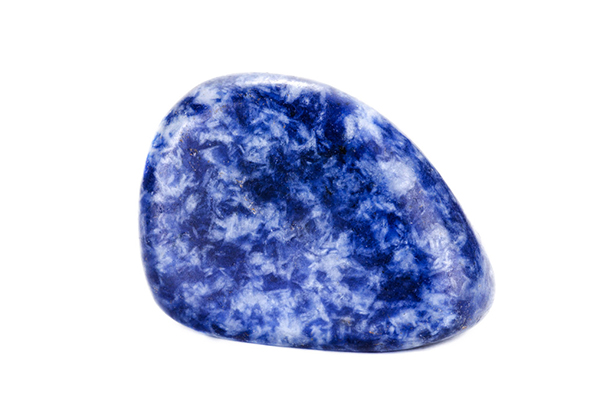Gemstones are a fascinating aspect of the Earth’s crust, and it’s difficult not to marvel at the beauty and diversity of the stones. Among these stones, Sodalite and Sapphire are two that often attract attention due to their unique properties and characteristics. Both gemstones have been prized throughout history for their stunning colors, but they differ in many ways. In this blog post, we’ll take a closer look at Sodalite Vs Sapphire, comparing their characteristics, differences, and similarities.
What is Sodalite?
Sodalite is a beautiful blue mineral that is part of the Feldspathoid mineral group. It’s found in various parts of the world, including Brazil, Canada, Namibia, and Russia. Sodalite’s name comes from its sodium content, as it contains a high level of sodium, aluminum, silicon, and chlorine.
Characteristics of Sodalite
Sodalite has a unique color and pattern, with a deep blue hue and white streaks that often resemble veins. The stone is a rare mineral that is typically found in igneous rocks, such as volcanic and plutonic rocks.
One of the distinctive features of Sodalite is its fluorescence. When exposed to ultraviolet light, Sodalite glows an orange-yellow color. The stone also has a vitreous or glassy luster, making it a popular choice for jewelry.
Colors and Patterns of Sodalite
Sodalite’s blue color is one of its most recognizable features. However, the stone also has other colors, including gray, white, green, and pink. The blue color of Sodalite is due to the presence of the mineral Lazurite.
Sodalite’s patterns vary, but the most common one is a white streak or vein that runs through the stone. These veins can create unique and attractive patterns, making Sodalite an excellent choice for decorative objects like vases and figurines.
Sources of Sodalite
Sodalite is found in various regions worldwide, including Brazil, Canada, Namibia, Russia, and the United States. In Brazil, Sodalite is mined from the state of Bahia, while Canada’s primary source of Sodalite is from the region of Ontario.
What is Sapphire?
Sapphire is a gemstone known for its beautiful and vibrant blue color. It’s a variety of the mineral corundum, which is an aluminum oxide mineral that also includes ruby. Sapphire is primarily found in countries such as Australia, Thailand, Sri Lanka, and the United States.
Characteristics of Sapphire
Sapphire is a durable and robust gemstone with a Mohs hardness rating of 9, making it one of the hardest minerals on Earth. It’s also relatively dense, with a specific gravity of around 4, making it denser than most other gemstones.
Sapphire has a vitreous or glassy luster, which is a desirable quality for gemstones. The stone’s color is the result of the presence of trace amounts of iron, titanium, and chromium in its crystal structure.
Colors and Variations of Sapphire
Although Sapphire is famous for its blue color, it also comes in various colors, including pink, yellow, green, and white. These color variations result from the presence of different impurities in the crystal structure.
One of the most sought-after variations of Sapphire is the Padparadscha Sapphire, which is a beautiful and rare stone that combines pink and orange hues. Another valuable variety of Sapphire is the Star Sapphire, which features a unique six-rayed star pattern caused by intersecting needle-like inclusions in the stone.
Sources of Sapphire
Sapphire is found in several countries worldwide, with some of the largest producers being Australia, Thailand, Sri Lanka, and the United States. Australia is known for producing high-quality blue sapphires, while Sri Lanka is famous for its Padparadscha sapphires.
Differences between Sodalite and Sapphire
While Sodalite and Sapphire are both beautiful stones, According to wholesalecrystaljewellery.com experts said, they have many differences.
Physical Differences
Appearance
One of the most apparent differences between Sodalite and Sapphire is their appearance. Sodalite has a deep blue color with white veins, while Sapphire is available in a range of colors, including blue, pink, yellow, and green.
Hardness
Sapphire is one of the hardest minerals on Earth, with a Mohs hardness rating of 9. Sodalite, on the other hand, has a much lower hardness rating of 5.5 to 6.
Density
Sapphire is denser than Sodalite, with a specific gravity of around 4, while Sodalite has a specific gravity of around 2.3.
Chemical Differences
Composition
Sapphire is a variety of the mineral corundum, which is an aluminum oxide mineral. Sodalite, on the other hand, is a sodium aluminum silicate mineral.
Structure
The crystal structure of Sapphire is hexagonal, while Sodalite’s crystal structure is cubic.
Properties
Sapphire is an excellent conductor of heat and electricity, while Sodalite has poor conductivity.
Applications and Uses
Sodalite is mainly used for decorative purposes, such as for making vases, figurines, and other decorative objects. In contrast, Sapphire is a popular choice for jewelry, including rings, necklaces, and earrings.
Similarities between Sodalite and Sapphire
While Sodalite and Sapphire have many differences, they also share some similarities.
Origin
Both Sodalite and Sapphire are found in various regions worldwide, with some of the largest producers being Canada, Brazil, Sri Lanka, and Australia.
Gemstone Properties
Both Sodalite and Sapphire are gemstones that are prized for their unique and attractive qualities. They are both relatively durable and have a vitreous or glassy luster.
Healing Properties
Both Sodalite and Sapphire are believed to have healing properties. Sodalite is believed to help with communication and self-expression, while Sapphire is believed to have calming properties and promote mental clarity.
Conclusion
Sodalite and Sapphire are two beautiful gemstones that have unique and attractive properties. While they differ in appearance, hardness, and chemical composition, they share some similarities in their origin, gemstone properties, and healing properties. Whether you’re looking for a decorative object or a piece of jewelry, both Sodalite and Sapphire offer something special and unique.




